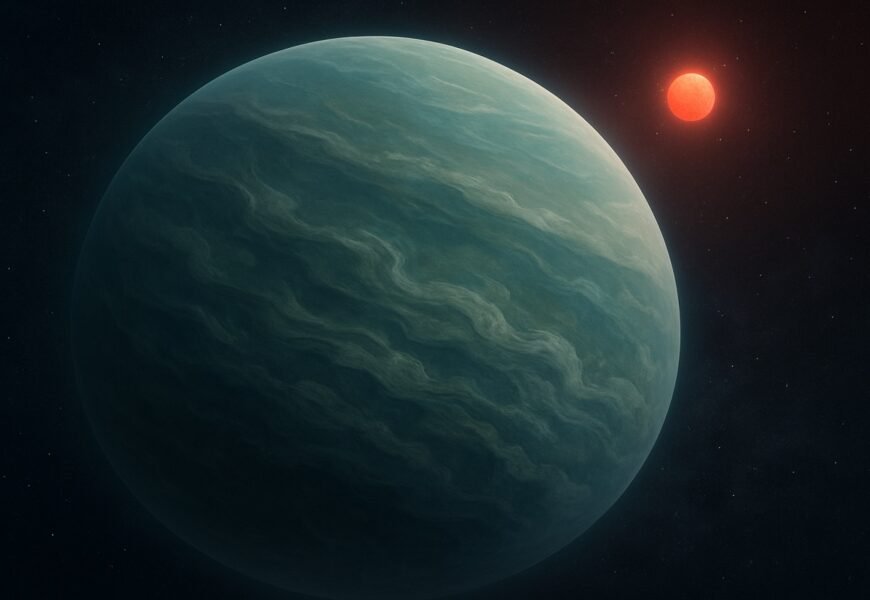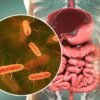“If it is life, then it’s the biggest scientific discovery in human history. If it isn’t, then it’s still a revelation—about just how strange planets can be.”
— Dr. Nikku Madhusudhan, University of Cambridge
In May 2025, something remarkable happened, and it didn’t involve war, politics, or climate catastrophe. It came quietly, in spectral data beamed from 120 light-years away.
The James Webb Space Telescope, NASA’s $10 billion successor to Hubble, detected a curious cocktail of gases swirling in the atmosphere of an exoplanet called K2-18b. Among them: methane, carbon dioxide, and, most intriguingly, dimethyl sulfide, or DMS.
On Earth, DMS is produced almost exclusively by phytoplankton—tiny oceanic lifeforms. It’s not the kind of compound we expect to find in lifeless atmospheres. That’s why this finding has sent a tremor through the scientific world, not as a declaration, but as a question: what, or who, is out there?
A Water World in the Shadows
K2-18b isn’t new to astronomers. Discovered in 2015, it orbits within the habitable zone of a red dwarf star in the constellation Leo. Roughly 8.6 times Earth’s mass, it falls into a class of planets called “sub-Neptunes,” gaseous worlds smaller than Uranus but larger than Earth.
Until recently, the consensus was that such planets were unlikely to host life. Too thick an atmosphere, too much hydrogen, too different from Earth.
That assumption is changing.
Over the past few years, researchers have begun to explore the potential of Hycean worlds—planets with a hydrogen-rich atmosphere and a water-covered surface. If the pressure and temperature are just right beneath that atmosphere, liquid water could persist. And where there’s water, life might follow.
K2-18b is now the poster child of this new class. The Webb telescope’s findings support this model. Spectroscopic analysis has shown not only water vapor but also methane and carbon dioxide, gases that suggest the planet might have an ocean beneath its thick hydrogen blanket.
And then there’s the DMS.
The DMS Dilemma
Dimethyl sulfide is an organic molecule. On Earth, it’s the smell of the sea after a summer storm, produced by plankton as a byproduct of their metabolism. Its detection on K2-18b, according to NASA scientists, has a 99.7% confidence level.
That doesn’t mean it’s definitive.
Space is a realm of false positives. Methane, for instance, can arise from both biological and geological processes. The same is theoretically possible for DMS, though no known abiotic mechanism currently explains its production in a hydrogen-dominated exoplanet atmosphere.
Skeptics caution that calibration errors or unknown chemistry could be at play. The signal is faint. It needs confirmation. NASA and the University of Cambridge are already planning further Webb observations to check.
But the statistical signal is strong enough to pose the question. And once that question is asked, it cannot be unasked.
A Philosophical Threshold
This isn’t the first time humans have thought they might be on the brink of discovering extraterrestrial life. From the canals of Mars to the Wow! signal, history is littered with claims that evaporated under scrutiny.
But this time, the tools are different. The Webb telescope peers across vast interstellar distances using infrared spectroscopy, a method that allows scientists to “read” the chemical composition of distant worlds by studying how light filters through their atmospheres.
This means we’re not just guessing, we’re measuring.
Still, a measurement is not a revelation. At best, it’s a whisper. And it forces us to reckon with a deeper question: What does it mean to detect possible life?
For astrobiologists, it’s a methodological shift. For philosophers, it’s existential. For policymakers, it may one day become practical. If we ever confirm life elsewhere, it will upend not only science, but belief, ethics, and even geopolitics.
Zooming Out: Why It Matters
The K2-18b findings arrive at a time when humanity is both looking outward and inward.
We’re struggling with planetary limits—climate change, biodiversity collapse, pandemics—and questioning our place in the cosmos. Discovering life beyond Earth wouldn’t solve these problems. But it would contextualize them. It would remind us that Earth isn’t singular. That we’re not alone, or at least not exceptional.
It also shifts the center of the astrobiology conversation. For decades, scientists fixated on finding Earth 2.0. But if life can arise on a Hycean world, hostile by Earth standards but chemically fertile, it broadens our search parameters drastically.
There may be more life in the universe than we imagined. Just not where we were looking.
The Road Ahead
What happens next?
NASA and its international partners will continue observing K2-18b, refining spectral models, and seeking confirmation of DMS. Other telescopes, like ESA’s Ariel, set to launch in 2029, may eventually offer additional insights.
In parallel, machine learning tools are improving our ability to interpret the vast, noisy datasets involved in exoplanet studies. As algorithms evolve, we may become better at distinguishing true biosignatures from mimics.
But no single signal will ever be enough. The discovery of life, if it happens, will likely come as a convergence of many lines of evidence, not a singular eureka moment.
Until then, K2-18b stands as a symbol of both promise and humility. It tells us we are capable of looking beyond our world, but not yet beyond our doubts.
Sources
- NASA – Official K2-18b Results
- Washington Post: Signs of life on exoplanet K2-18b
- TIME Magazine coverage
- Astrophysical Journal Letters – 2025 spectral analysis preprint
- University of Cambridge Exoplanet Research Group














